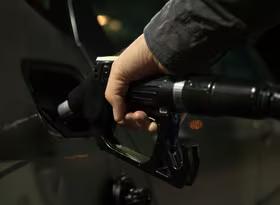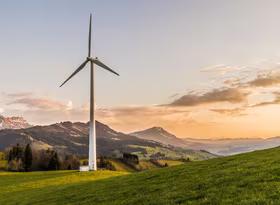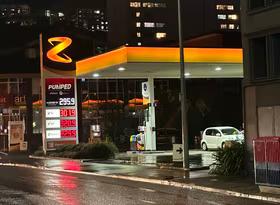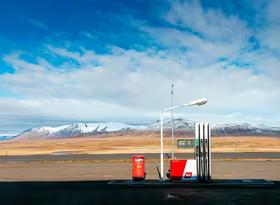
Car-related prices still inflationary, but trends shifting
Over the last two years, consumers have experienced high inflation across a wide range of goods and services. Car owners, and prospective buyers, are no exception, as vehicle-related prices have risen strongly since the start of the COVID-19 pandemic. Higher prices for new and used cars have put pressure on prospective buyers, while higher prices for fuel, services, and repairs have hit car owners. We expect strong inflation will persist across New Zealand’s economy in 2023, and will continue to put prospective buyers and car owners under pressure.
Used cars ease from sky-high levels
Used car prices increased 20% (seasonally adjusted) between June 2020 and March 2022. COVID-19 disrupted new car production in 2020, with social distancing restrictions and worker illness causing production to fall 16%pa during the year. A lack of new vehicles meant more prospective buyers turned to the used car market, lifting demand for used vehicles.
In addition to the effects of lower production on new car availability, the supply of new and foreign used vehicles was constrained throughout much of the pandemic, as shipping delays and disruptions limited the number of vehicles imported. Chart 1 shows the Consumers Price Index (CPI) alongside the used motor vehicle component of the CPI, highlighting the substantial lift in prices for used vehicles over the last two years.
By December 2022, used car prices had eased 1.1% (seasonally adjusted) from their March 2022 peak. Used car prices pulled back as new car production picked up again, with global output increasing 3.3% and 6.0%pa in 2021 and 2022 respectively.
Used car prices could also have eased recently because of the introduction of the Clean Car Discount, a scheme that has generally made used cars relatively less affordable when compared to new vehicles. The scheme has made used cars relatively less affordable because it imposed additional charges on higher-emissions vehicles, and used cars tend to emit emissions at a higher rate on average than new cars. By making used vehicles less affordable, the Discount scheme might have caused some prospective buyers to look in the new car market instead, lowering demand for used vehicles.
The Clean Car Discount was introduced at the start of April 2022, which coincides with the peak in used vehicle prices reached in the March 2022 quarter. The Clean Car Standard, a new scheme which encourages car dealers to import newer, lower-emissions vehicles was introduced in January 2023, and may similarly cause buyer demand to shift towards new cars and away from used cars. Therefore, the Clean Car Standard scheme may also drive down demand for used vehicles, and could result in a similar flow-on effect on used car prices.
New car prices start to pick up steam
Although prices for used cars have eased from their pandemic highs, new car prices have started to rise in recent months, increasing 5.8% (seasonally adjusted) between September 2021 and December 2022. Chart 2 highlights that new car prices have declined on an annual basis for most of the last decade. Prices generally declined throughout the pandemic, but since early 2022 they have started to increase swiftly.
The recent increase in new car prices counters the general trend over the last 10-12 years, and some of the drivers of the increase remain unclear. One factor put forward to explain higher prices is that the COVID-19 pandemic highlighted the vulnerabilities of the auto-manufacturing supply chain, and substantial investments have been made to shore up the global supply chains of raw materials, car production, and international shipping.
In New Zealand, the introduction of the Clean Car Discount and Clean Car Standard schemes might also have increased demand for new cars. The Clean Car Discount scheme makes new cars relatively more affordable when compared to used cars, which will result in more prospective buyers turning to the new car market – all else being equal.
Fuel prices ease, but maintenance costs gain momentum
Petrol prices increased 54% between June 2020 and June 2022, with global events coalescing to drive fuel prices through the roof. Factors that caused fuel prices to be elevated over this period included the Russian invasion of Ukraine, the subsequent economic sanctions imposed on Russia, a reduction in OPEC oil production targets, growing refining margins, and the sluggish growth of production capacity in the US shale industry. Chart 3 shows petrol and other fuels and lubricants prices from the CPI, illustrating the rapid growth in recent years.
Fuel prices eased 11% (seasonally adjusted) between June and December 2022, due to higher production in the US and a weaker outlook for global oil demand.
However, car owners still face higher prices for goods and services required for car upkeep. Prices for vehicle parts and repairs increased 19% and 13% respectively between September 2020 and December 2022 (both figures seasonally adjusted). Chart 4 shows the vehicle parts and vehicle servicing and repairs classes of the CPI, demonstrating that pricing pressure continued to build for these goods and services in the December 2022 quarter.
Strong inflationary pressure, but trends shifting
Used car prices declined over recent quarters, which would perhaps indicate inflationary pressures for transport goods and services is easing. Along with the fall in used car prices, fuel prices have eased, further reducing inflationary pressures for transport goods. However, strong pressures remain in some transport categories, with new car prices starting to rise, and prices of parts and repairs also increasing at a faster pace.
When formulating our outlook for car prices in the coming quarters, we will keep our eye on a few key areas. The effects of the introduction of the Clean Car Standard on car prices are yet to be measured by the CPI, but anecdotal reports suggest that the Standard is already having an inflationary effect on the market.
Another important factor is whether the reductions in the fuel excise duty (FED) and road user charges end in June or whether the government continues them. Given the timing, we are less confident that the higher FED and road user charges will be reintroduced this year. The recent reprioritisation of the government’s work programme led to policies that had the primary objective of lowering transport emissions (such as the Clean Car Upgrade scheme) being axed, and policies with the primary objective of helping households with the cost-of-living crisis favoured. The FED reduction clearly falls in the latter camp.
Our outlook for car prices will be updated in the next Infometrics Transport Forecasts, which will be published on 14 April 2023.















